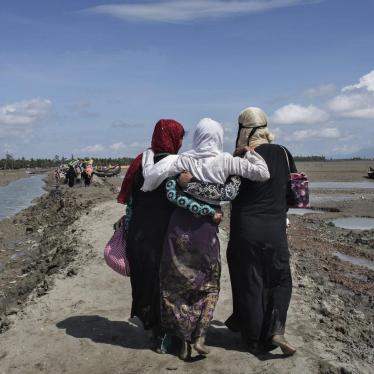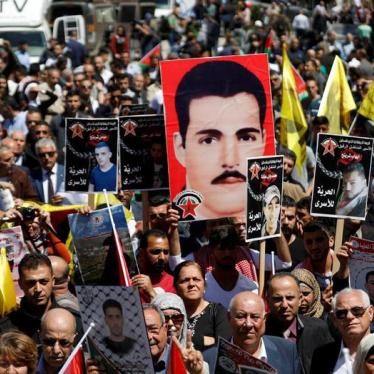Colombia’s armed groups are among the worst violators of international norms against the recruitment and use of child soldiers, Human Rights Watch said today. The Colombian government should ratify and implement the United Nations treaty prohibiting this practice.
Tomorrow, the U.N. Security Council will discuss the Secretary General’s Report on Children and Armed Conflict, which names Colombia as a country in which child soldiers are used. Three of Colombia’s armed groups—the Revolutionary Armed Forces of Colombia (FARC), the National Liberation Army (ELN) and the paramilitary groups—are singled out for censure in the report.
“The United Nations has recognized that both guerrillas and paramilitaries violate fundamental humanitarian standards by relying on children to fight,” said José Miguel Vivanco, Americas director for Human Rights Watch. “These horrific practices are causing immeasurable damage to Colombia’s children, and to Colombian society as a whole.”
Human Rights Watch estimates that more than 11,000 children fight in Colombia’s armed conflict, one of the highest totals in the world. At least one of every four irregular combatants in Colombia is under 18 years of age. Several thousand of them are under the age of 15, the minimum age permitted for recruitment into armed forces or groups under the Geneva Conventions.
To help address the problem, Human Rights Watch called on the Colombian Congress to ratify and implement the Optional Protocol to the Convention on the Rights of the Child on the involvement of children in armed conflict. The treaty, which Colombia signed in 2000 but has not yet ratified, establishes 18 as the minimum age for direct participation in hostilities, for compulsory recruitment, and for any recruitment or use in hostilities by irregular armed groups.
Approximately 80 percent of child combatants in Colombia belong to one of the two left-wing guerrilla groups, the FARC or ELN. The remainder fights in paramilitary ranks.
In 2004, UNICEF undertook informal exploratory talks on ending the use and recruitment of child soldiers with the ELN and with the United Self-Defense Forces of Colombia (AUC), a paramilitary coalition. According to the U.N. Secretary General’s report, these groups showed a willingness to engage in dialogue but did not make any commitment to halt the practice.
The FARC continues to recruit and use children, and have made no commitment to stop this practice. By Human Rights Watch’s estimate, the FARC has the majority of child combatants in Colombia. A conservative estimate is that 20 to 30 percent of all FARC combatants are under 18 years old.
After declaring a ceasefire in December 2002, paramilitary groups promised to release all children in their ranks. More than two years later, this has not happened. According to the Secretary General’s report, paramilitaries have released nearly 180 children to the Colombian authorities. But thousands of other children continue to be used as combatants, even as paramilitary leaders engage in negotiations with the government for the demobilization of their troops.
The Colombian Congress is currently debating legislation to govern the demobilization of paramilitary groups. Human Rights Watch urges the Congress to include the demobilization of children from paramilitary forces as a priority item in the current debate. The Congress should also ensure that those responsible for the recruitment of children are held accountable.
“The demobilization bill must send a clear message to all armed groups using child combatants,” said Vivanco. “If Colombia does not bring to justice those responsible for exploiting these children, these heinous crimes are likely to continue.”
In a 2003 report, “You’ll Learn Not to Cry: Child Combatants in Colombia,” Human Rights Watch documented how both guerrillas and paramilitaries exploit the desperation of poor children in rural combat zones.
Many children join up for food or physical protection, to escape domestic violence, or because of promises of money. Some are coerced to join at gunpoint, or join out of fear. Others are street children with nowhere to go. Children as young as 13 are trained to use assault rifles, grenades and mortars.
Child soldiers are often ordered to participate in summary executions, torture, murder, kidnapping and attacks on civilians. They are also exposed to disease, physical exhaustion, injury, sudden death and torture at the hands of the enemy. Children who try to escape and return to their families risk execution.
The Secretary General’s report also describes other abuses against children by Colombia’s illegal armed groups, including rapes and killings. In particular, the report highlights the FARC’s killing in September 2004 of a 15-year-old girl kidnapped the previous year.
“The FARC have shown no willingness to stop harming and exploiting children,” said Vivanco. “To the contrary, their abuses seem to have worsened.”






